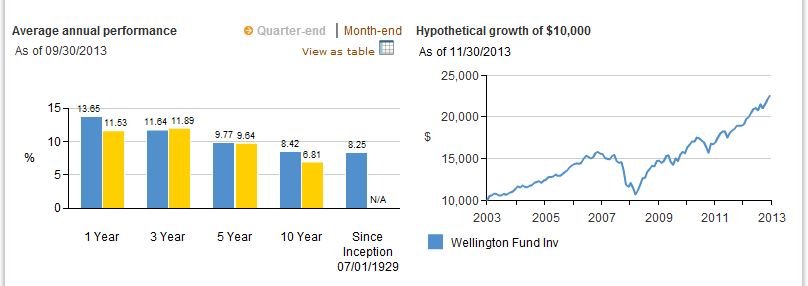I looked a bit more at this VSMGX, and it appears to be reasonable for an indexing investor who wants a balanced MF with some foreign stock/bond exposure. It is a fund of funds, and invests in 4 index funds with roughly the following mixture at the present time.
Total US stock: 42%
Total Foreign stock: 18%
Total US bond: 32%
Total Foreign bond: 8%.
As a passive balanced fund, how does it compare to active balanced funds like Wellington with the same 60% stock AA, albeit with only 10% of that being foreign stocks?
I looked up Morningstar data, and computed the return from Dec 1994 to Dec 1999 of Wellington as 23.1%/yr, and from Dec 1999 to Dec 2013 as 5.78%. These numbers were better than VSMGX at 17.8% and 4.78% respectively. All returns are nominal, meaning not inflation adjusted.
So, while I hold only very little Wellington, I have to ask if the performance numbers above prove the skills of its MF manager, or do people still call it luck?



